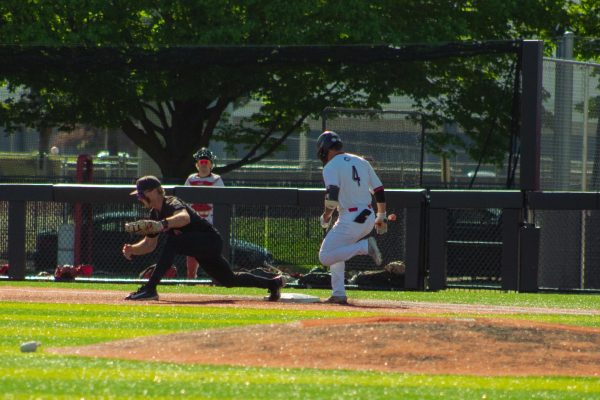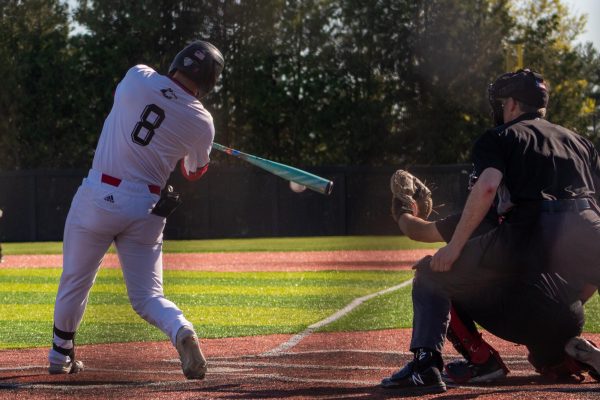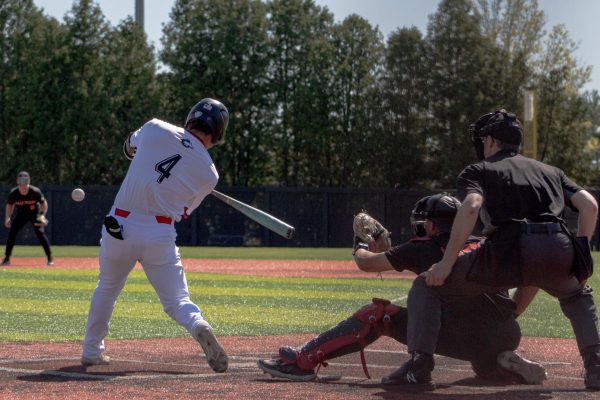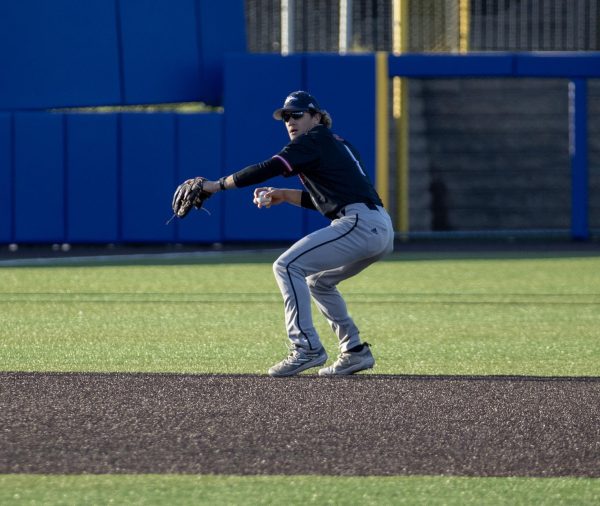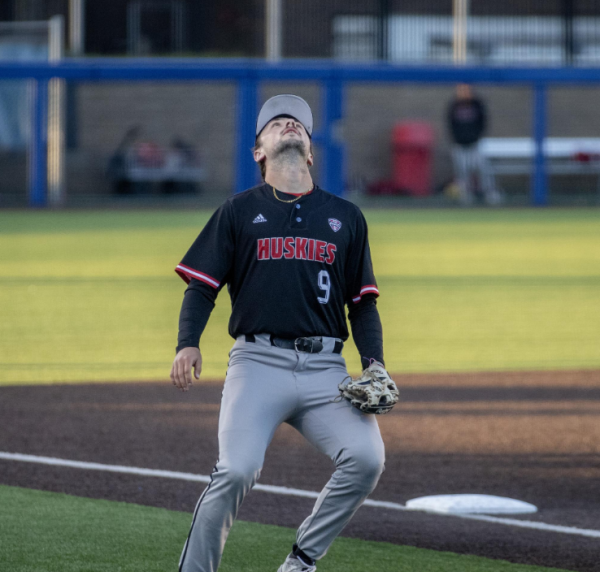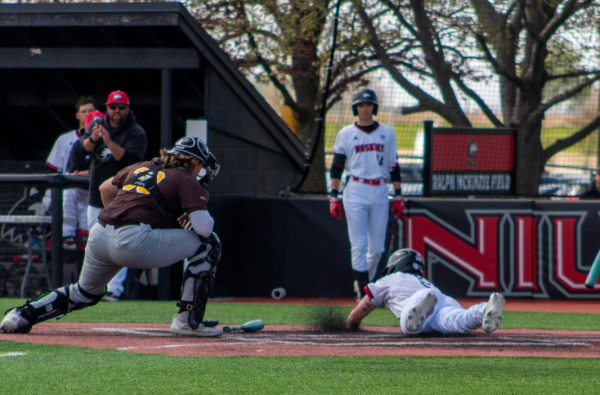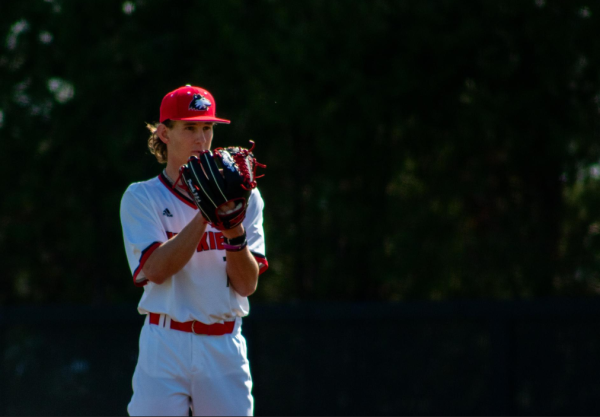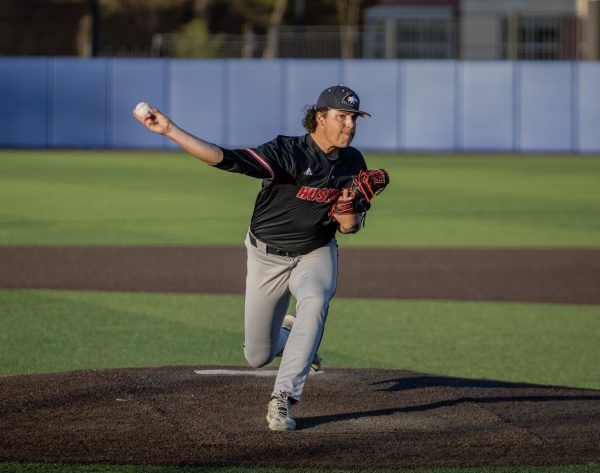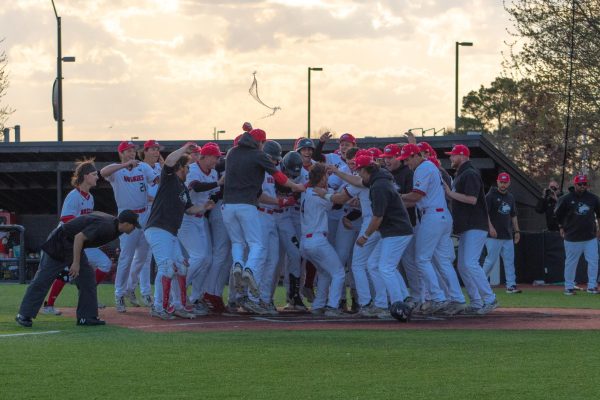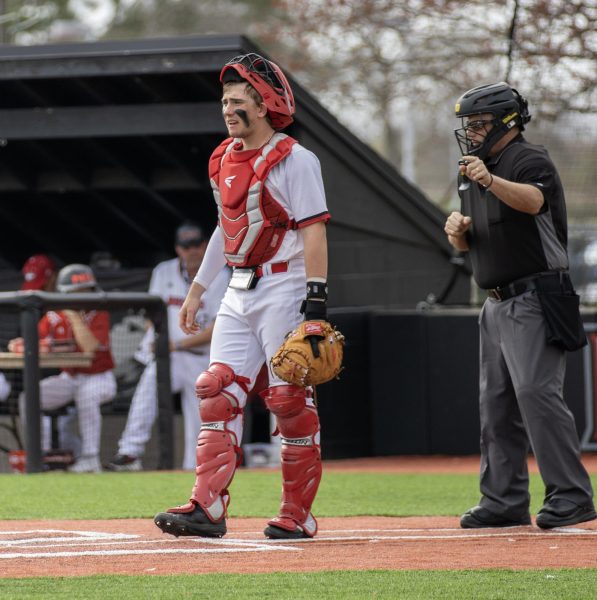Serving up strikes
September 23, 2003
A change-up in volleyball?
It happens, but the ball isn’t pitched, it’s served.
NIU’s Amanda Newlin thinks of the person serving as the pitcher and the coach as the catcher because the coach is the one making the calls, much like a catcher does behind the plate.
NIU coach Ray Gooden also likens serving to baseball.
“Serving is kind of like pitching because you might have a fastball pitcher or one that throws knuckleballs,” he said. “[In volleyball] a team that sees all float servers, they get locked on float serves. With serving, you have to mix it up.”
There are three types of serves: a jump serve, a float serve and a drop serve.
A jump serve is when you toss the ball up into the air and get your serving hand on top of the ball. Brooke Dodson, Tera Lobdell and Newlin all use jump serves for the Huskies.
“It’s difficult because the timing has to be right,” Newlin said. “The success of a jump serve is in the toss because if the toss isn’t there, you won’t hit it right.”
A float serve is when the player hits the ball higher into the air and tries to drop the ball right on the other side of the net. NIU’s Shara Parker uses a short float serve, while Megan Markowski takes a more difficult approach to float serves.
Markowski does a running float serve, in which she starts on one baseline and takes a jogging start parallel to the net while doing a float serve on the move. Other teams have a hard time with her serve because they haven’t seen it.
Parker does a more conventional version of the float serve.
“I just started to use a float serve this year,” Parker said. “[Gooden] asked me to step up and try doing one. I just try to put the ball a foot over the net and for some reason I can do it. It makes it tough on the defense to return.”
A drop serve is a normal serve, one where a player just hits the ball over the net for the other team to return. The ball is hit right out of the palm of the hand and clears the net by a couple of feet.
Parker said she thinks it’s important to mix up the serves to keep the other team on its heels.
“Varying serves are kind of like using a change-up,” Parker said. “If a team expects us to use a lot of jump serves and then all of a sudden we use a short float serve, it makes them scatter and try to react.”
Gooden said he thinks that serving is one of the most important aspects of volleyball because it can take teams out of their game plans.
“Serving is the one skill in volleyball where you have complete control,” Gooden said. “It’s pretty much you against the other team. Your goal is to try and take them out of their offense.”


